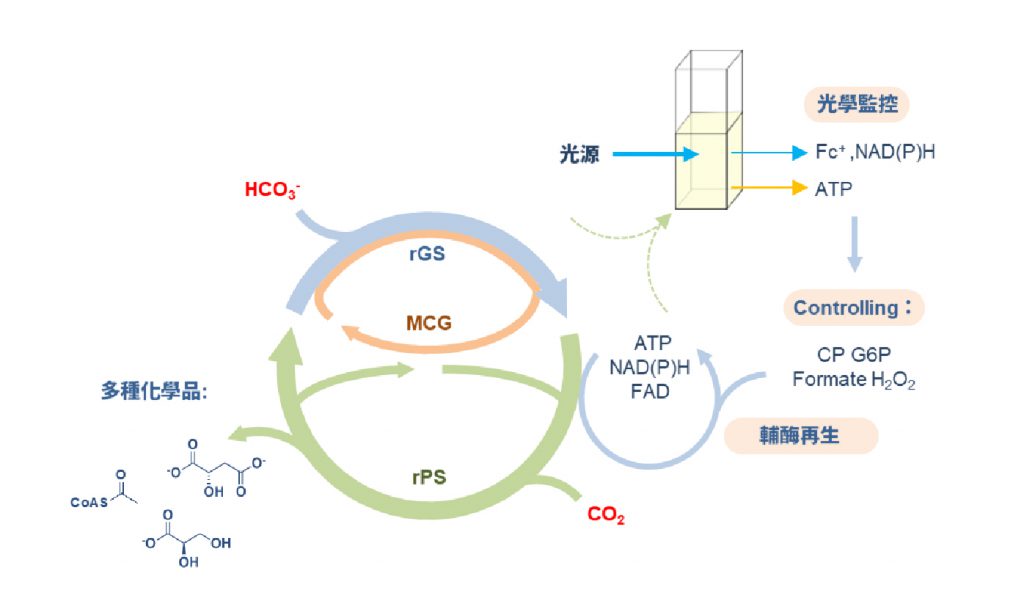The conversion, or fixation, of carbon dioxide (CO2) into biomass and related carbohydrates is an essential process, necessary for all of life. Until a recent publication by Academia Sinica President James C. Liao and his research team, the fixation of CO2 by photosynthesis was the most effective means for CO2 conversion on large scale, accounting for most of the CO2 fixed on Earth. Through this process, carbon in the form of CO2 is converted to cellular components and biomass during organismal growth. However, the rate of this process is controlled by cellular regulation, which balances CO2 fixation with cell physiology and growth. This regulation typically is also limited by oxygen sensitivity of key enzymes involved in the carbon fixation process. Liao and his team spent seven years to design an artificial carbon fixation system with CO2-fixing rate comparable to or better than photosynthesis, in turn transforming CO2 into reusable chemical products. This achievement was published in the international journal Nature Catalysis in February 2022.
According to President Liao, this is the second artificial carbon fixation pathway created in human history. Liao’s system can sustain operation for six hours, making it the most efficient one reported thus far.
Dr. Paul Lin, a member of President Liao’s research team from the Institute of Biological Chemistry, said the research team designed a system with a CO2-fixing rate comparable to or even greater than typical CO2 fixation rates of natural organisms. The system includes a total of 21 enzymes from different microorganisms. To prevent losses in efficiency caused by the oxygenase activity of the enzyme RuBisCO, the research team replaced oxygen-sensitive enzymes with two that are oxygen-insensitive. Furthermore, because the system is an in vitro cell-free system, it decouples CO2 fixation from cellular physiology and growth. In so doing, they have created a system that overcomes the major bottlenecks present in the process used by nature. Such artificial systems may lead to better technology for capturing atmospheric CO2.
In the face of severe climate change and rising atmospheric CO2 levels, President Liao and his team have created a sustainable carbon fixation system through synthetic biology. This advance may help the development of carbon-negative technologies and solve global warming problems. This is the most recent in a series of papers from the Liao group in this area, with earlier advances being published in leading journals including Nature, Science, and Cell.

